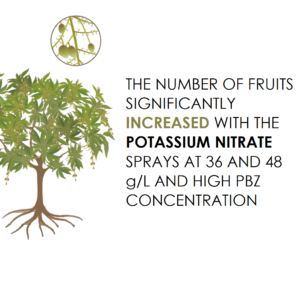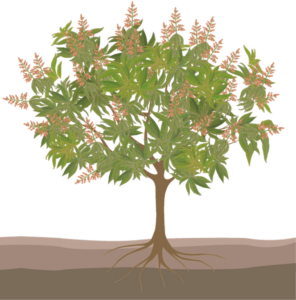The effects of paclobutrazol, potassium nitrate (KNO3) and calcium nitrate (Ca(NO3)2) on the growth and development of mango cv. Tommy Atkins were studied in Venezuela. Four-year-old trees grafted on mango cv. Hilacha, spaced 8 m × 4 m, were used. Paclobutrazol was applied to the soil at 0 and 6 ml Cultar/m2, while nitrate was given at the following levels: no nitrate, 8% KNO3 or 8% Ca(NO3)2 sprayed in one application, and 3,5% KNO3 or 3,5% Ca(NO3)2 sprayed in three applications at weekly intervals. Paclobutrazol inhibited vegetative growth and stimulated flower development. Flowering was initiated six weeks earlier than under normal conditions. In contrast, the nitrates had no effect on generative shoots, but 8% KNO3 stimulated the burst of vegetative, mixed and total buds. Paclobutrazol produced a large number of fruits per inflorescence but had no effect on the percentage of retained fruits. The highest percentage of retained fruits was found for three sprays of 3,5% KNO3 (Table 1).
Table 1. Effect of potassium nitrate and calcium nitrate on fruit retention of mango.



